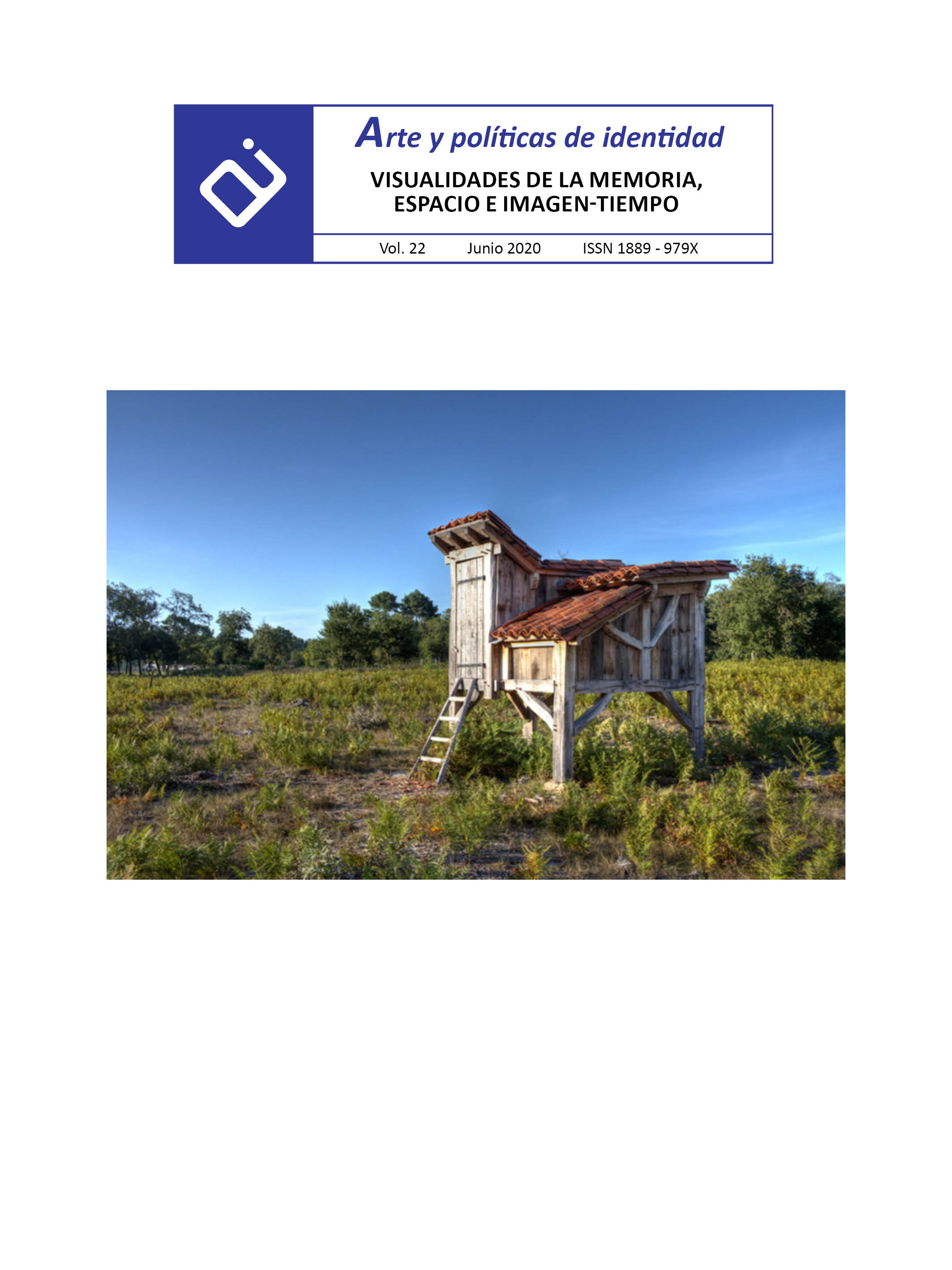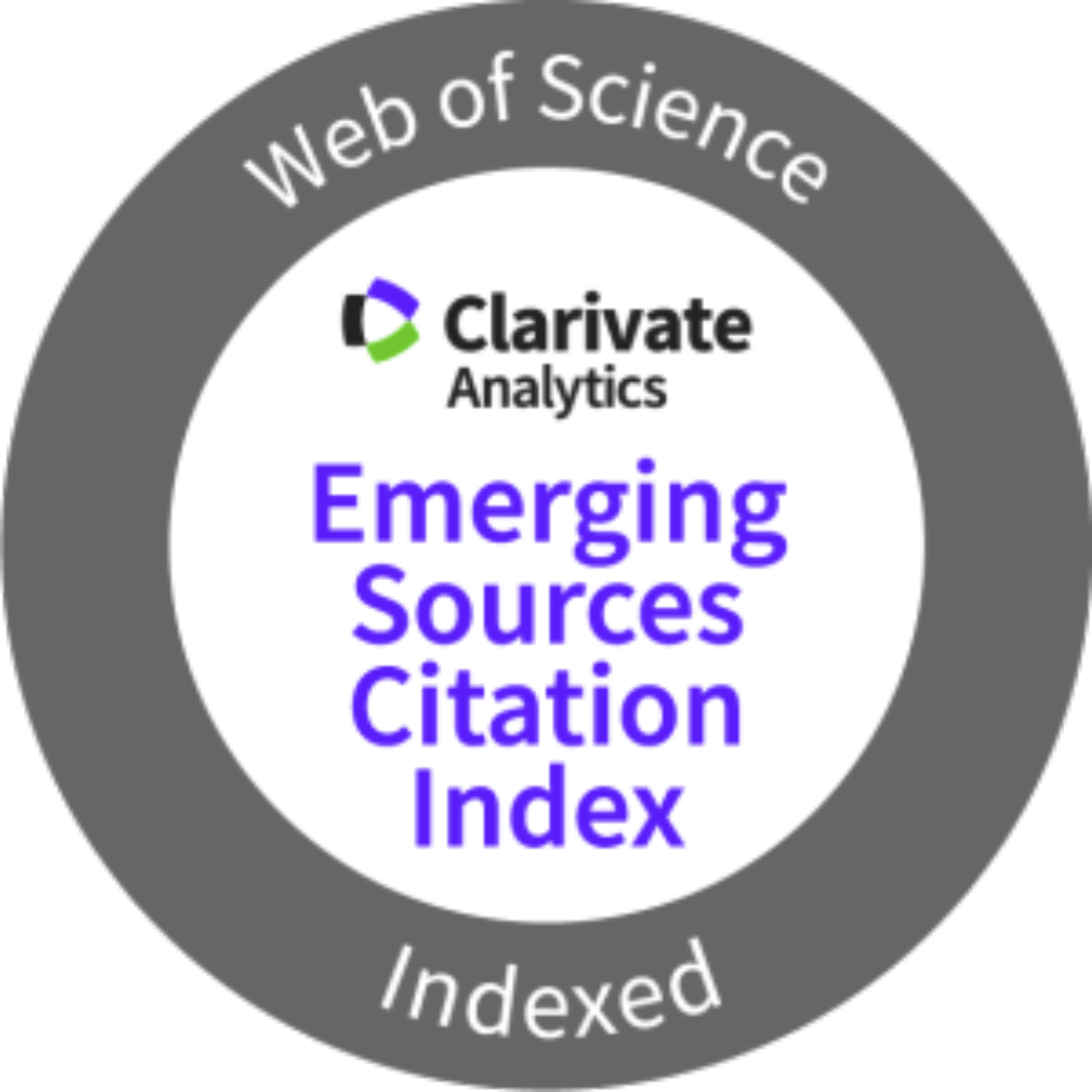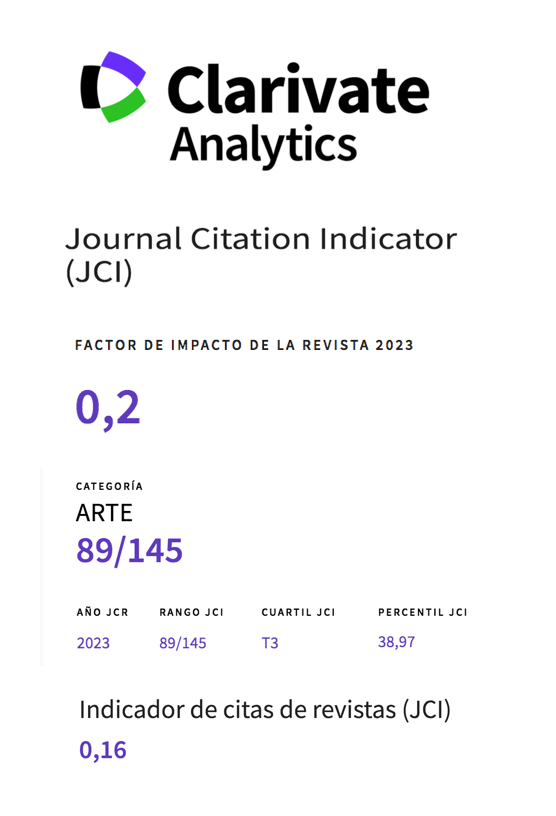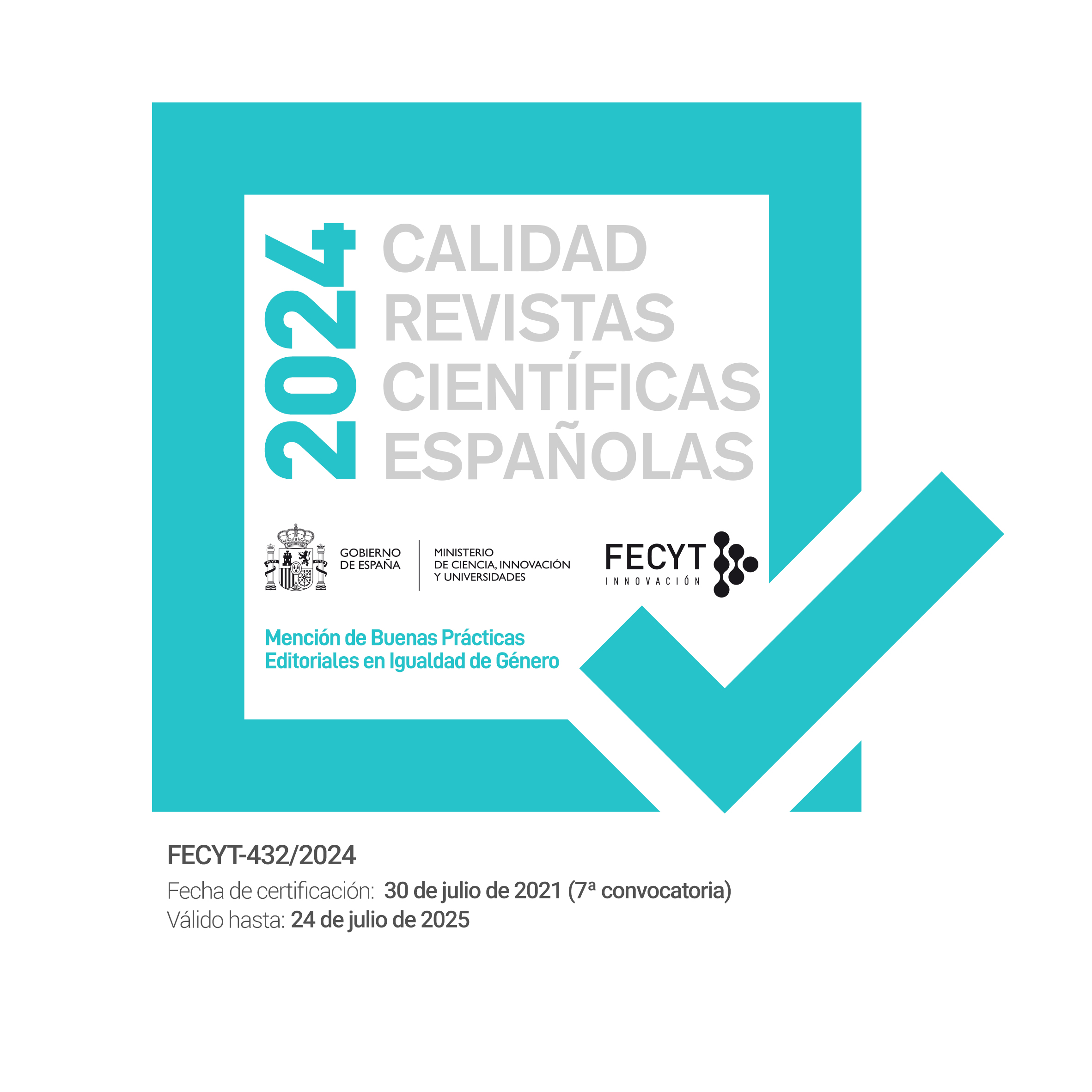The poetics of spirituality and the introspective in the work of Younes Rahmoun. He made a reading of Art distanced from the historicist canons
Abstract
The present study is formulated in a situation saturated with fixed and essentialist images of the Arab and Muslim individual, which tries to typify the difference in absolutes, without taking into account the existing diversity.In this sense, we propose to go beyond the usual historicist canon to be able to develop a specific analysis of the work of an non-western artist, who contradicts modern reason to reflect through art on the spiritual experience in the Muslim faith. It is, therefore, an approach to the work of the Moroccan artist Younes Rahmoun, built from an interdisciplinary perspective, in which we analyze the relationships between his artistic discourse, his spiritual convictions and his life experience.
For this, by way of contextualization, we define the underlying reasons behind the aesthetic-conceptual and narrative choices used by Rahmoun. Indeed, we start from the conviction that we are not facing an artistic experience isolated from its cultural, social, political, economic, historical and cultural reality; but a continuity integrated in the context, which works in harmony with existing styles, reflections and ways of life in the local and global environment.
Downloads
-
Abstract766
-
PDF (Español (España))612
References
Art Jameel. (Productor).(2018). Meet Younes Rahmoun, shortlisted for the Jameel Prize 5, for his work Tâqiya Nôr.
Barthes, R. (2007). El placer del texto y la lección inaugural. Madrid: Siglo I.
Barroso, Villar. (2014). Arte Contemporáneo en el Norte de África. Oviedo: Julia Barroso Villar.
Benjamin, W. (2008). Tesis sobre la filosofía de la historia. México: Itaca.
Belmenouar, S. (2012). Art contemporain arabe. Transcontinentales. 13(12), 9.
Beaud, M-C., Froment, J-L. y Augé, M. (1999). L’objet désorienté au Maroc. Paris: Musée des arts décoratifs-Union centrale des arts décoratifs.
Bourriaud, N. (2013). Estética relacional. Buenos Aires: Adriana Hidalgo.
Careri, F. (2002). Walkscapes. Barcelona: Editorial Gustavo Gili, GG.
Cheng, F, (2016). De l’âme. Paris: Albin Michel.
CIAV - Meisenthal - France. (Productor). (2010). Les 77 lampes de Younes Rahmoun.
Derrida, J. (2006). Márgenes de la filosofía. Madrid: Cátedra.
Didi-Huberman, G. (2015). Fasmas. Cantabria: Shangrila.
Foucault, M. (1988). El sujeto y el poder Revista Mexicana de Sociología. Revista Mexicana de Sociología. 50(3), 3 20.
Favaretto, M.S. (2020). Las Fronteras de los archivos. Lo exótico en Pasolini. Arte Y Políticas de Identidad, 21, 52-73.
Fanon, F. (2017). Fundamentos recíprocos de la cultura nacional y las luchas de liberación. Los condenados de la tierra. (pp.161-193). Tafalla (Navarra): Txalaparata.
Fatmi, M. (2011). Entrevista con Véronique Rieffel.
Foster, H., Buchloh, B., Krauss, R.y Bois, Y-A. (2006). Arte desde 1900 Modernidad, antimodernidad, posmodernidad. Madrid: Akal.
Hagège, C. (2017). Les Religions, la Parole et la Violence. Paris: OJ.SC.Humaines.
Kant, I. (2003). Lo bello y lo sublime. Madrid: Espasa Calpe.
Kandinsky, V. (1989). De lo espiritual en el arte. México DF., México: Editorial Premia.
Karroum, A. (2015). Sous nos yeux (Ante nuestros ojos). Sous nos yeux. Barcelona: MACBA; La Kunsthalle Mulhouse.
Lipovetsky, G. (2013). La felicidad paradójica. Barcelona: Anagrama.
Loos, A. (1908). Ornamento y delito. Paperback.
Malraux, A. (2013). There is no hierarchy in Art, 2013.
Montazmi, M. (2017). Faouzi Laatiris: fugues chimériques dans la mondialisation. Revus desd mondes musulmans et de la Méditerranée, 141.
Nava Murcia, R. (2012). El mal de archivo en la escritura de la historia. Historia y grafía - Deconstruyendo el Archivo. 38(19). México, Departamento de Historia de la Universidad Iberoamericana, 95-126.
Pantina, L. (2019). El arte como forma de meditación (tesis de pregrado). Universidad de Sevilla, Sevilla, España.
Panzani, I. (2013). Walid Raad, “Scratching on Things I Could Disavow: A History of Art in the Arab World”. Démocratiser l’art [contemporain]. Marges. 15, 166-167.
Ranciere, J. (2014). El reparto de lo sensible. Buenos Aires: Prometeo libros.
Rahmoun, Y. (2018). Younés Rahmoun: Little Worlds, Complex Structures. Qatar: Virginia Commonwealth University School of the Arts in Qatar.
Rahmoun, Y. (2009, 4 de Septiembre). Interior Travel. Entrevista con Jérôme Sans.
Read, H. (1975). Imagen e idea. México DF, México: Fondo de cultura económica.
Said, E. (2019). Poder política y cultura. Barcelona: Debate.
Said, E. (2013). Representar al colonizado: los interlocutores de la antropología. Reflexiones sobre el exilio (pp.179-218). Barcelona: Debolsillo.
Said, E. (2013). Orientalismo. [Versión E-Reader].
Scheiwiller, S.G. (2018). (Neo)Orientalism: Alive and Well in American Academia: A Case Study of Contemporary Iranian Art. En T. Keskin. (Ed.), Neo-Orientalism, American Hegemony and Academia (pp.195-230). Boston: Turgut Keski.
Shabout, N. (2009). Newision Arab Contemporary Art in the 21st Century. Londres: Transglobal Publishing.
Sontag, S. (2018). Sobre la fotografía. Barcelona: Debolsillo.
Wymann, S. (2011, 4 de junio). Tetuán, Meisenthal, Doha. Novo, 12.
Works published in this journal are subject to the following terms:
- The Service of Publications from the University of Murcia (publishing house) keeps the published works’ copyrights, and favors and allows the reuse of these works under the license indicated in point 2.
- Works are published in the journal’s online edition under the license Creative Commons Reconocimiento-NoComercial-SinObraDerivada 3.0 España(texto legal). They can be copied, used, disseminated, transmitted and publicly exhibited, as long as: i) the author and original source of publication are cited (journal, publishing house and work’s URL); ii) they are not used for commercial purposes; iii) the existence and specifications of this license are mentioned.
3. Conditions for auto-file. It is allowed and encouraged that authors share electronically their pre-print version (the pre-reviewed version) and /or post-print version (the reviewed and accepted version) of their Works before the publication, since it promotes its circulation and dissemination. RoMEO color: green.










